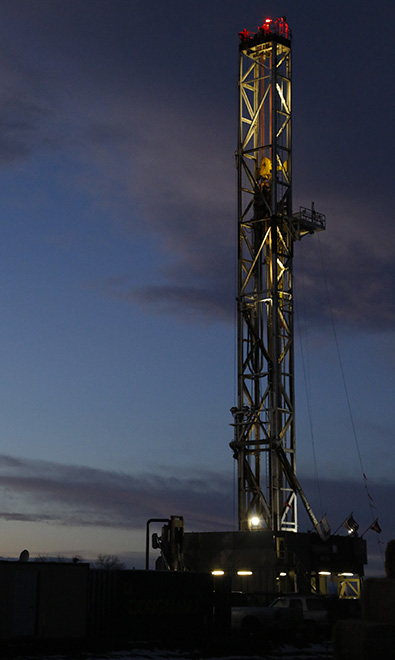The Big Impact of Imperceptible Things: David Oonk on Fracking and Microplasticsby Alison Gilchrist |
|
This summer, CSTPR’s own David Oonk is working with the Center for a New Energy Economy (CNEE) to make the communication of climate research to policy makers a little bit easier. CNEE is headed by Colorado’s 41st Governor, Bill Ritter, Jr. and was formed to help the government create policies that steer the United States in the direction of clean energy. “They do a lot of information synthesis. They build out dashboards, really helpful information centers. They run workshops, all trying to connect the technical information around energy policy to decision-makers,” said Oonk. “They’re trying to better inform energy policy-related decisions.” CNEE, founded in 2011, is a department of Colorado State University. Oonk is excited about the variety of topics he’ll be working on as one of the graduate interns. “Since I’ve been spending so much time on natural gas and fossil fuel related policy, I’m interested in building out some more expertise on renewable energy policies and energy financing policies,” said Oonk.
“The case study I’m looking at right now is hydraulic fracturing in the Front Range,” he said. “I’m trying to understand decision making around it. I’m also trying to understand its implications for our energy transitions because of climate change, and the air quality risks and impacts that we’re experiencing: how do we measure them, what are the uncertainties, and how do we make decisions about them.” Oonk makes the point that many of the health impacts of fracking are hard to measure, but must certainly be considered when policy decisions about the process are made. It’s hard to see the toxic effects of benzene and ozone (both emitted during the process of fracking) as a civilian, but policy makers should be aware of them when considering fracking legislation. “There is an interesting tension between the requirement of science, measurement, and instruments to measure what is going on, and the serious health questions around it,” said Oonk. In fact, he is generally interested in studying the large impacts of nearly invisible things. As well as the effects of fracking on air quality, Oonk is also studying the tiny pieces of plastic that end up in our mountain streams—microplastics. Along with Patrick Chandler, another graduate student in CSTPR, he is measuring these microplastics in Rocky Mountain streams. “We’re essentially going to monitor a bunch of streams around the Front Range, up and down watersheds,” said Oonk. ‘We want to see, one: if microplastics are present, which the pilot study suggests that they are; and, two: what plastics are in there, and what concentrations they’re at.” He will also be working with Chandler to display this information in a way that is engaging, artistic, and informative. “We’re doing all the data collection and analysis this summer, and then in addition to that, we’re doing an exhibit that is going to be up in CU’s Sustainability, Energy and Environment Community (SEEC) sometime this Fall,” he said. “That will be a photography, sound and video multimedia exhibit.” |
|
Oonk and Chandler’s goal is to make the prevalence and problems of microplastics visible to the naked eye. “One of the goals of the art is to bring the microscopic, invisible world, make it perceptible, and make it emotive,” said Oonk. “We’re trying to elicit some reaction to the fact that our reach as a species, our pollution as a species, is so great that even the areas we think are still pristine are in fact infected by our plastic use.” Oonk’s work shows us how important it is to find a way to explain or display the impact of things we can’t see or appreciate. The more we can understand the small changes, the more we can anticipate and alleviate the more damaging changes that follow. From air quality as a result of fracking to the insidious prevalence of microplastics, David Oonk is helping us understand the big impact of imperceptible things. |
 Alison Gilchrist Alison Gilchristalison.gilchrist@colorado.edu CSTPR Science Writing Intern |



 Oonk is a graduate student in the
Oonk is a graduate student in the 